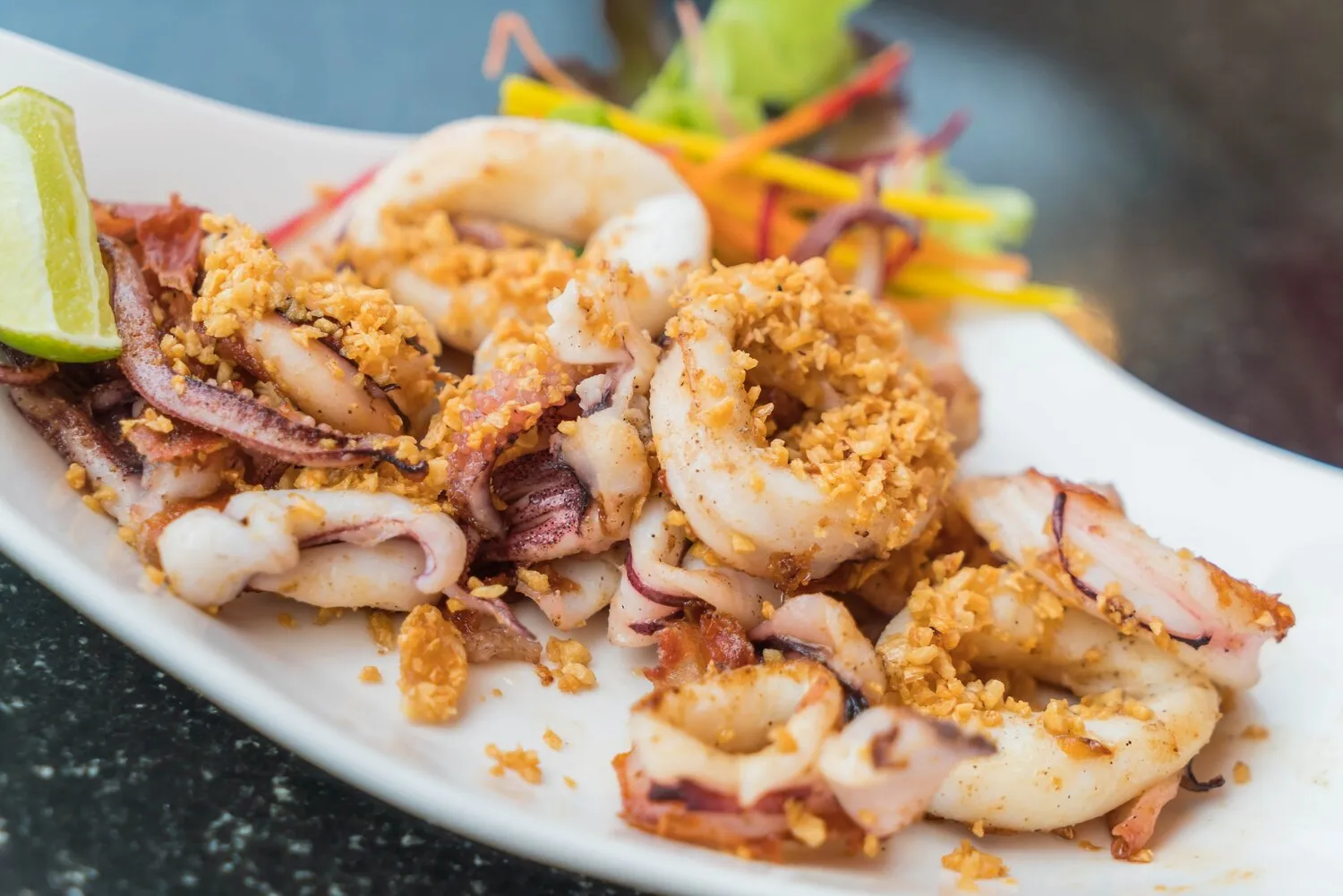
Seafood
Many reviews mention seafood offerings. The specific types likely vary but may include fried shrimp or fish.
Nutrition Facts
* The % Daily Value (DV) tells you how much a nutrient in a serving of food contributes to a daily diet. 2,000 calories a day is used for general nutrition advice.
Fred Chason's Grandsons Buffet
Seafood has been a staple in human diets for millennia, with evidence of its consumption dating back to prehistoric times. Coastal communities around the world have developed unique methods for fishing, preparing, and preserving seafood, reflecting their local environments and culinary traditions. Trade routes have also played a significant role in spreading different types of seafood and cooking techniques across cultures.
Seafood holds significant cultural importance in many coastal communities. It is often a central element in celebrations, religious rituals, and everyday meals, reflecting a deep connection to the sea and its resources.
Festivals and Celebrations
Many coastal towns host seafood festivals celebrating local catches. These festivals often feature cooking competitions, seafood markets, and cultural performances, providing an opportunity to showcase local traditions.
Symbolism
Certain seafood species may carry symbolic meanings in different cultures. For instance, fish can represent prosperity and abundance in some Asian cultures. In some coastal communities, certain types of shellfish are associated with fertility or good luck.
Sustainability
Growing awareness of overfishing has led to a greater emphasis on sustainable seafood practices. Many cultures are actively working to preserve fish stocks and protect marine ecosystems for future generations.
The flavors of seafood are incredibly diverse, ranging from delicate and subtly sweet to briny and intensely savory. The specific flavors depend on the type of seafood, its freshness, and the cooking method used.
Common flavor profiles include: Sweetness (e.g., crab, scallops), Saltiness (naturally occurring from the sea), Umami (savory richness found in fish like tuna and salmon), Briny (oysters, clams), and Earthy (some shellfish). Spices, herbs, citrus, and sauces are often used to enhance or complement these natural flavors. Olive oil, garlic, lemon, and white wine are frequently used in Mediterranean-style seafood preparations. Asian cuisines often incorporate soy sauce, ginger, sesame oil, and chili peppers.
Freshness is Key
Always purchase seafood from reputable sources and ensure it smells fresh, not overly fishy. Look for clear eyes (if applicable) and firm flesh.
Don't Overcook
Seafood cooks quickly and can easily become dry and rubbery if overcooked. Follow recipes carefully and use a thermometer to ensure optimal doneness. Many fish are best when slightly undercooked, as they will continue to cook with residual heat.
Proper Storage
Store seafood properly to prevent spoilage. Keep it refrigerated on ice or in the coldest part of your refrigerator. Consume fresh seafood within a day or two of purchase.
Bone Removal
If preparing whole fish, learn proper techniques for removing bones to ensure a safer and more enjoyable eating experience.
Explore additional Seafood dishes and restaurants
Explore SeafoodDiscover top dining spots and culinary experiences in Fayetteville.
Explore FayettevilleLearn more about the food culture, restaurant scene, and culinary heritage of United States.
Explore United States